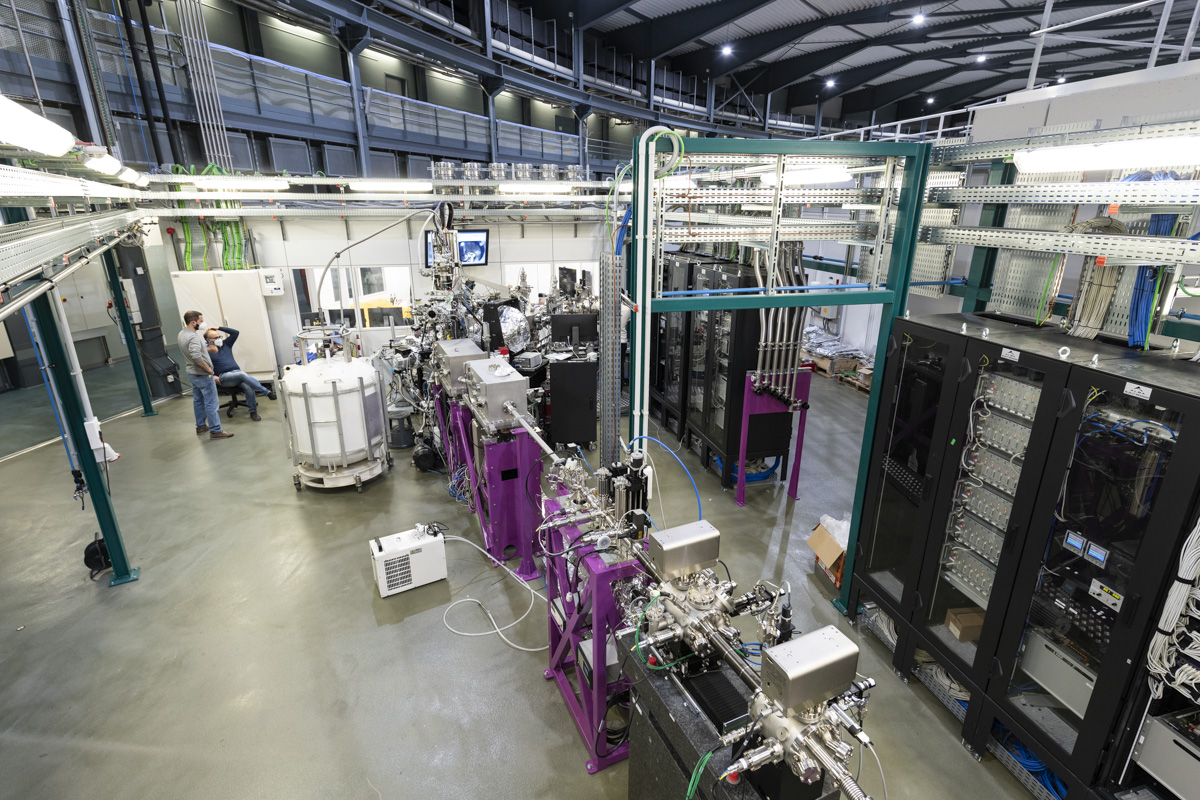ALBA Synchrotron

One of the latest beamlines of ALBA, performing ARPES (Angle Resolved Photo-Emission Spectroscopy) experiments, has been essential for IMDEA Nanociencia and ICN2 researchers to demonstrate how the conducting surface states of a special class of materials -topological insulators- change due to the introduction of magnetic impurities via doping with a small amount of rare earth elements.
These results will help understanding better the quantum anomalous Hall Effect which is essential in the development of spintronics.
LOREA is the 9th beamline of the ALBA Synchrotron, dedicated to the study of the electronic structure of solids by means of ARPES technique. This beamline, co-funded by the European Regional Development Fund (ERDF) within the Framework of the ERDF Operative Programme of Catalonia 2014-2020, is fully operational hosting different research groups from Spain and abroad.
Now, a study led by researchers from IMDEA Nanociencia with the participation of researcher from the Catalan Institute of Nanoscience and Nanotechnology (ICN2), the University of Barcelona (UB) and the ALBA Synchrotron and the theoretical support from the Bulgarian Academy of Sciences and the Donostia International Physics Center (DIPC) has been published in Nano Letters journal. The focus of this work is how a topological insulator, a class of quantum materials whose interior behaves as an electrical insulator but its surface acts as an electrical conductor, is affected by doping with rare earth.
The results, obtained thanks to ARPES measurements performed at LOREA, demonstrated that the doping of Bi2Se2Te with rare earth elements (Er and Dy) changed its electronics properties such as the band structure and Fermi surface, which account for the distribution of electrons that are responsible for electrical current. Doing so, researchers discovered a strong magnetic interaction between the dopant and the substrate, and found that its strength, higher than previously predicted, affected the symmetry of the electronic properties of the material, and therefore the way electrons transport the electrical charge. With this new discovery the researchers have taken a step that will help broaden the knowledge of quantum materials for spintronics and could lead to ground-breaking technology in a not-that-far future.
The experimental data were obtained at LOREA beamline using ARPES (Angle Resolved Photo-Emission Spectroscopy) technique and XPS (X-Ray Photoelectron Spectroscopy) measurements, to study the electronic properties and interactions between the substrate and the rare earth dopant.
Massimo Tallarida, scientist in charge of LOREA beamline, comments how this study opens new research opportunities in the field: “Thanks to the direct observation of the strong exchange coupling with the experimental techniques offered by LOREA, we can propose a method to dope topological insulators with rare earth impurities in a controlled way to realize the Quantum Anomalous Hall Effect, consisting in the formation of dissipation-less spin polarized currents in the absence of magnetic field.”

Figure: Fermi surface (FS) for pristine Bi2Se2Te, showing the hexagonal-warping of the topological insulator (left) and for 0.3 Er monolayer (ML)/Bi2Se2Te, showing the trigonal-warping of the TSS (right). All measurements acquired at LOREA with a photon energy hν = 52 eV and at low temperature T = 15 K.
The project is co-funded by the European Regional Development Fund (ERDF) within the Framework of the ERDF Operative Programme of Catalonia 2014-2020.
With the collaboration of Fundación Española para la Ciencia y la Tecnología.

